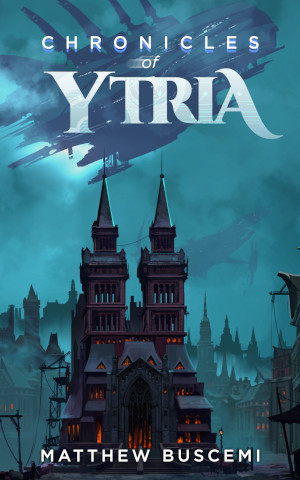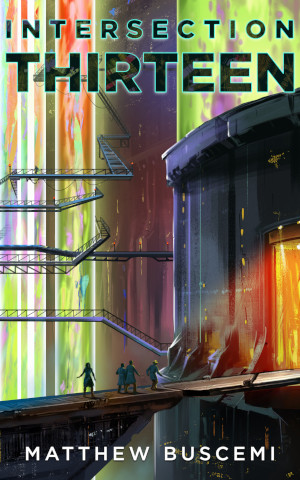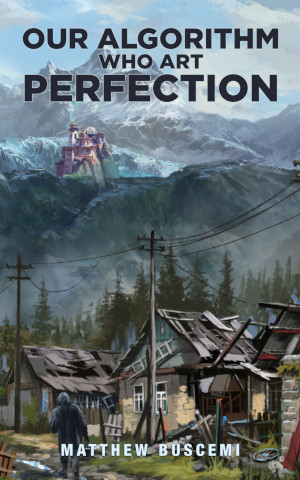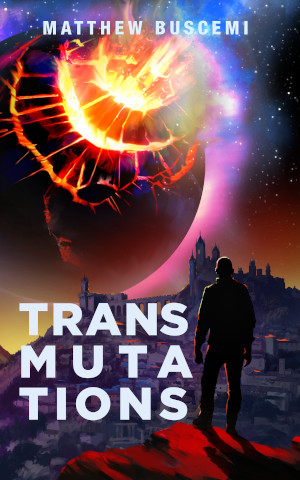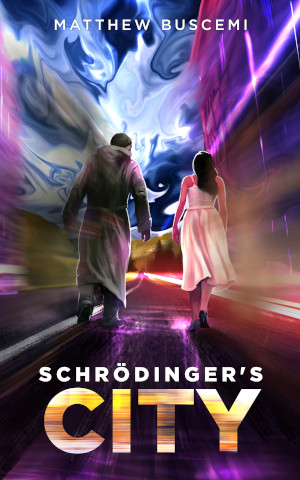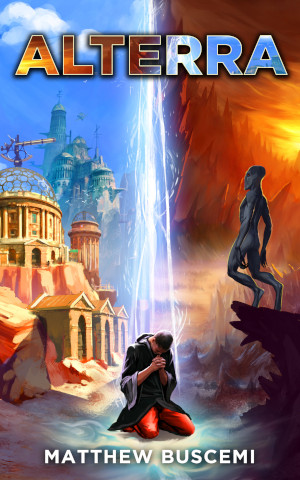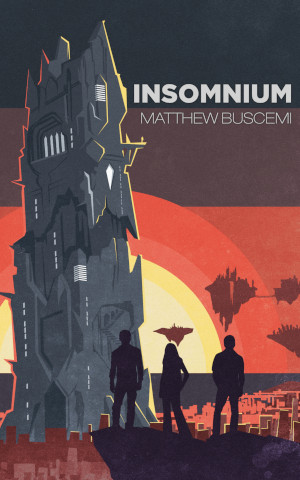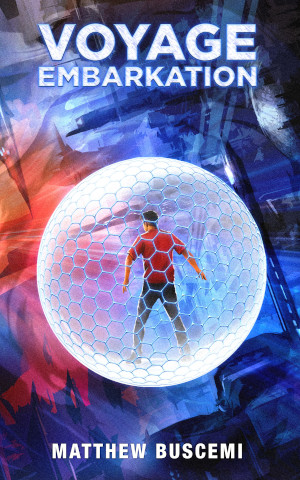Stranger Things Than Stranger Things
Monday, September 9, 2019 at 6:44pm
This critique was originally published on a prior version of my blog on September 4, 2016. I have made minor stylistic revisions only.
Introduction
After hearing numerous acquaintances bring up the Netflix original series Stranger Things in conversation over the course of many weeks, I decided to try the eight episodes out. Since completing them, I’ve been put in the awkward position of being asked if I liked it. I cannot answer that question with a "yes" or "no." This finally resulted in a post to Facebook, which garnered mixed responses from readers there, and that brings me to the present essay, in which I will elaborate upon my thoughts in much more detail.Here is the text I posted to Facebook: "Just finished Stranger Things. My analysis: boring, unimaginatively drawn parallel world; focus on violence and body horror shock effects; heavy reliance on the cliffhanger gimmick at every episode conclusion; relies heavily on overdetermining ‘evil’ into monsters and fully repulsive human characters; the story’s best element, the interaction between the heroic characters, could have been achieved utilizing realism solely (sf is utilized as a gimmick rather than treated as core to the narrative); said characters are not capable of carrying the story by themselves. Needless to say, I will not be watching season two."
Validity as a Critical Target
One of the first issues I must address is that of the validity of Stranger Things as a target for criticism. Arguments of two varieties were leveled against my assessment: first, that Stranger Things was meant to be apprehended solely as entertainment, and thus criticism is inappropriate; second, that it is inappropriate to use sf as a lens for criticism since Stranger Things is rightly classified as horror.As a preface to my refutation of the former argument, consider the article You Are What You Dream by Serdar Yegulalp, the key line being this one:
Nothing is ever just entertainment; even our entertainments are works of art whether or not we like it.Criticism, it turns out, is just another form of apprehending beauty, which is the self-same process as being entertained. Criticism is just the engagement of reflection and internalization within the entertained mind. A.O. Scott puts this well in Better Living Through Criticism:
The point of view of the Facebook acquaintance is an understandable one–"I can’t see how you possibly arrived at these conclusions! You must be making all this up!"–but it is wrong-headed. To see why, we only have to imagine the existence of a hypothetical third party who levels the same argument at my acquaintance that he leveled against me. This new individual claims that the only "proper" way to apprehend the work is to not compare it to anything else, or to not consider one’s own life experiences, or with the audio off, or in grayscale, or perhaps "properly" to him means eyes, ears, emotions, and intellect shut up completely.Aesthetic experience takes place in a crowd or in ecstatic isolation. It is, in either case, a series of discrete moments of contemplation and surrender. You stand in front of a painting, sit in a theater seat, look at a screen or a dancer or the page of a book and you are moved, tickled, transported, shocked. Or else you aren’t. But over time, those moments aggregate into a pattern–unless, that is, they express a pre-existing tendency. You may well know what you like–but do you know why?
I think we can all agree that this is absurd. Any work of creativity is valid for any level of criticism with which a human mind is capable of engaging it. A criticism may be dismissed, but only through reason, not blanket statements that disavow all interpretations save the one being presented.
The second argument, that of Stranger Things being horror rather than sf, is a stickier issue. Sf is a genre with notoriously fuzzy boundaries. The genesis of sf itself–Mary Shelley’s Frankenstein–also happens to be the genesis of the horror genre. The nineteenth century’s other major player in the horror genre, Edgar Allen Poe, is, unsurprisingly, also considered to be an sf writer. And on through the twentieth century, from Lovecraft to Wyndham to Alien to Poltergeist, horror has always maintained a strong link to sf (whether science fiction–Alien–or fantasy–Poltergeist), even though it is undeniably also something somewhat separate–horror.
The best example I have seen of a literary theorist drawing a distinction–however contingent–between horror and horrific sf was Istvan Csicsery-Ronay Jr. in his book The Seven Beauties of Science Fiction. The sixth beauty is called "the grotesque." He defines the "scientific grotesque" as such:
I posit that Stranger Things suggests a strong connection to sf on multiple vectors, both science fictional and fantastical. For science fictional, there is the creature from the parallel universe, who is allowed access to the protagonists’ universe via illicit scientific experimentation. Eleven herself is bestowed with science fictional powers in line with Csicsery-Ronay’s definition. The creature’s apparent ability to rend additional tears between the two worlds after the establishment of the initial breach also seems to me very "scientifically grotesque."What we might call the scientific grotesque comes with the recognition of an embodied, physical anomaly, a being or an event whose existence or behavior cannot be explained by the currently accepted universal system of rationalization.
Even in terms of fantasy, the numerous allusions to Poltergeist, alongside references to Dungeons & Dragons and other fantasy literature, combine to make Stranger Things a remarkably sf work.
On this basis, I posit that Stranger Things can be analyzed both as sf and horror, making an sf critical analysis entirely appropriate.
The Unimaginative Parallel Universe and the Flattening of Morality
Anyone who has read my fiction will know that I hold the plot device of the parallel universe very dearly. I put this up front as a way of acknowledging my own bias on the subject. Nonetheless, it from this perspective that I am uniquely positioned to observe that startling simplicity and problematic nature of Stranger Things′ parallel universe.I will focus on two perceived problems here: the homogeneity of its composition, and the flattening of the narrative’s moral and ethical dilemmas caused by that composition in juxtaposition with the primary universe.
Here is the scene in which Mike and his science teacher, Mr. Clarke, discuss the parallel universe.
I will admit that the presentation here aligns well with Csicsery-Ronay’s definition of the science fictional grotesque. The familiar powers of modern science have found contact with a fantastical space and allowed it to infiltrate and corrupt human reality. Rather than a rationally sound world, the contact is with a surreality, possessing dynamics more magical than rational.Mike: So, you know how in Cosmos, Carl Sagan talks about other dimensions? Like, beyond our world?
Mr. Clarke: Yeah, sure. Theoretically.
Mike: Right, theoretically. So, theoretically, how do we travel there?
Mr. Clarke: You guys have been thinking about Hugh Everett’s Many-Worlds Interpretation, haven’t you? Well, basically, there are parallel universes. Just like our world, but just infinite variations of it. Which means there’s a world out there where none of this tragic stuff ever happened.
Mike: Yeah, that’s not what we’re talking about.
Mr. Clarke: Oh.
Mike: We were thinking of more of an evil dimension, like the Vale of Shadows. You know the Vale of Shadows?
Mr. Clarke: An echo of the material plane, where necrotic and shadow magic...
Mike: Yeah, exactly. If that did exist, a place like the Vale of Shadows, how would we travel there? Theoretically.
However, the universe’s composition leaves much to be desired. Somehow, all physical structures of the town of Hawkins, Indiana have been duplicated, but are covered in a kind of algae or mold growth, and particulate bio-matter wafts through the air in visible chunks. The reality is devoid of life, save for a malevolent creature resembling a tall man with long arms and legs, and with a flower blossom structure for a head. The creature possesses no faculty that could be called language and fails to present any evidence of higher cognitive functions. Throughout the narrative it is constantly capturing humans, bringing them back to its universe, and subsequently feeding upon them (or, as is demonstrated in the series’ closing sequences, perhaps some kind of metamorphosis was begun upon its victims).
The problem with a flat and devoid world presented as solely toxic and solely evil is that it invites the mind, unless on guard, into presuming the reverse is true of the thing it is set parallel to. The presence of a parallel universe of pure evil coerces us into the assumption that the universe of our protagonists embodies pure good. This effect might be mitigated if the narrative presented us with a spectrum of universes, so as we might be allowed to draw the conclusion that a wide range of shades of good and evil are possible, but this narrative presents us with only two: the world of Mike and his friends, and the Vale of Shadows.
One could argue that the presence of evil characters in the protagonists’ world counteracts this effect, but in my opinion, the dynamics of those juxtapositions only strengthen my argument.
All human characters associated with the creation of the parallel world, Dr. Brenner and his associates, have no identifiable positive qualities. With the sole exception of the two schoolyard bullies (who exist, in my opinion, solely to manipulate the feelings of Stranger Things′ target demographic, a group very likely to have been the victims of 1980′s bullying), the antagonists are aligned thematically with the parallel universe. They are its defacto demiurges, being owners of the research facility that birthed the creation of the first and only permanent portal to the parallel universe. I would argue that, thematically, Dr. Brenner and his associates are agents of the parallel universe (even if the monster is decidedly hostile toward them), and their existence only strengthens the inappropriate dynamic of "parallel universe evil/our universe good."
What would a better universe "of necrotic and shadow magic" look like? Such a universe could still be magical, fantastical, toxic to humans and overrun with alien fauna without being the embodiment of pure evil. What would constitute moral complexity in such a universe? Who would its inhabitants be? What would their language and culture be like? How would the good ones behave, and how would the bad ones? How would they interact with humans, and how we would we interact with them? Most importantly, what kinds of things would such a universe help the human audience of our 2016 real world understand about ourselves?
Such a universe would avoid the problem of the moral flattening effect when placed alongside our own.
The Jesus Cop-Out
An ethically flat narrative product of Western culture invariably seems to end up ripping off Christian mythology to some degree, usually stealing some or all of the Jesus story. This trite, hackneyed plot mechanic has a tendency to grate on a person once he or she becomes sensitive to it.The parallels between Eleven and Jesus are quite strong throughout the show’s first seven episodes. She is a social pariah with a level of emotional development unusual for a person her age, and most especially her era. She is enormously kind, forgiving, and level-headed when dealing with other "good" people behaving badly (e.g. Mike’s two losses of his temper), and enormously malevolent when dealing with unjust social structures–the grocery store employees and Brenner’s associates.
However, the metaphor is fully clinched with the narrative’s conclusion, in which Eleven must sacrifice herself in order to save not just Mike and his friends, but apparently our entire world. The parallel universe creature has survived fire, a bear trap, multiple gunshot wounds, and being slung with enormous rocks, and it appears no worse for these assaults. It is only Eleven’s telekinetic abilities that are its undoing, and Eleven’s as well.
The only missing corollary to the Jesus story was for her to rise again after three days’ time, and even though a number of months pass before the narrative’s conclusion, the ambiguous "Eggo-forest scene" suggests that even resurrection of a sort may have been a possible outcome for Eleven, one which would only cement the metaphor.
Jesus metaphors are not only inappropriate because they are trite. They are problematic when set alongside contexts that encourage the separation of morality into rigid binaries. When holiness is viewed as an unachievable property of some other being, rather than a goal to strive for in one’s own flawed but improvable interactions with others, then that conception becomes ethically dangerous. The structure of such a narrative encourages the members of its audience to give up on their own morality, to consider moral improvement to be "someone else’s problem," when in fact the problem lies within each and every one of us.
Conclusion
Contrary to my initial Facebook post, I will admit that upon further analysis, the elements of the horror genre, such as body horror and various forms of grotesquery, were well-placed and gave substance to the "1980′s collage" style of the narrative as a whole. My initial assessment of sf being inessential to the narrative did not stand up to much scrutiny either, which I discovered as I wrote this essay. I do still stand by my assessment that the heroic characters are the narrative’s best element, and their interactions demonstrate the script authors capable of deftly drawing characters’ personalities.However, the narrative’s gimmicky cliffhangers and incredibly simplistic worldview combine to form a story that feels as though it drew me in only to offer me nothing for my effort. This is what makes the question of whether I liked this show so difficult. It is much like asking me if I liked the last time I ate cotton candy. I enjoyed it very much. My analysis of the confection’s nutritional value and its effects on my health are another matter entirely. Stranger Things falls into much the same category.
